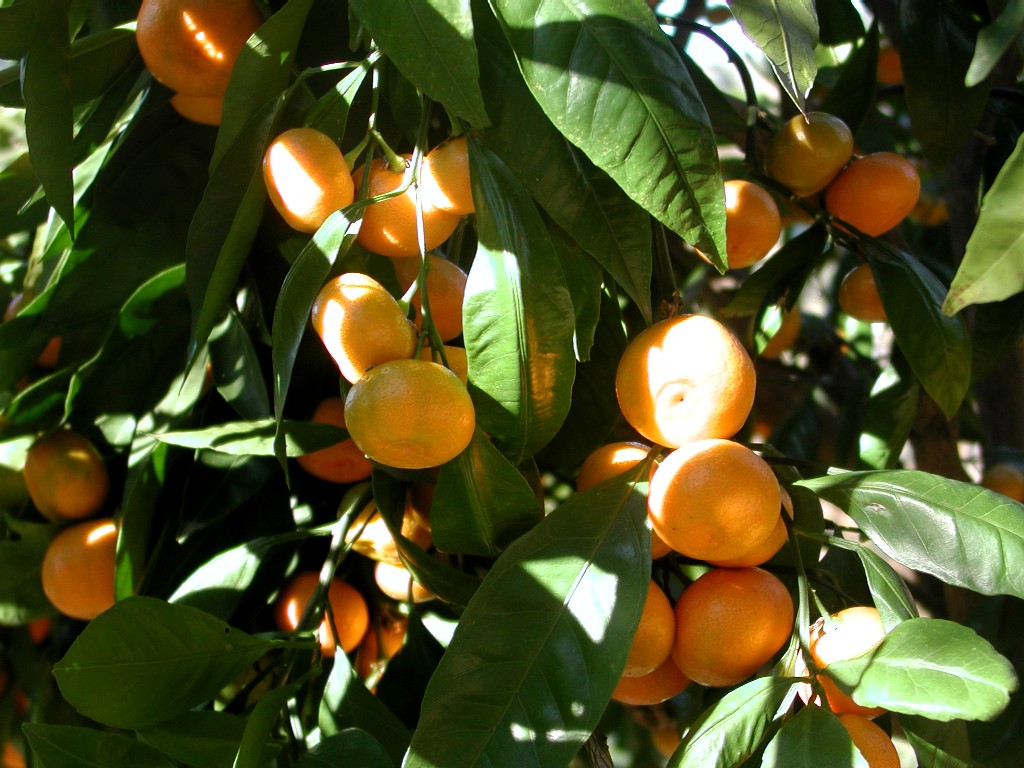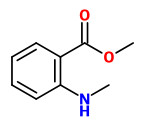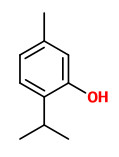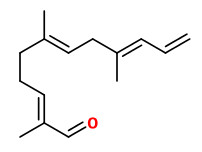Dies ist eine alte Version des Dokuments!
Citrus reticulata Blanco - syn. Citrus deliciosa Ten., Citrus nobilis Lour. - Rutaceae
mandarin, mandarine, Mandarine
Mandarin is possibly a native of south east China and or south Japan. It is extensively cultivated in East- and Southeast Asia, Australia and South Europe (introduced at the beginning of the nineteenth century).
„Specifically reddish-orange mandarin cultivars can be marketed as tangerines, but this is not a botanical classification.“ http://en.wikipedia.org/wiki/Mandarin_orange
A clementine (Citrus ×clementina = Citrus clementina hort. ex Tanaka; Citrus reticulata ‘Clementine’) is a hybrid between a mandarin and a sweet orange (so named in 1902). http://en.wikipedia.org/wiki/Clementine
Mandarin peel oils are dominated by limonene (55-96%), with several other hydrocarbons like ɣ-terpinene (trace-19%), p-cymene (trace-12%), myrcene (0.7-24%), α-pinene (0.2-2%), ß-pinene (trace-14%), sabinene (0.1-8%), and ß-phellandrene (0.2-0.8%) as minor components.
Mandarin leaf oils (petitgrain oils) show an important chemical variability with the occurance of sabinene (0.1-57%), ɣ-terpinene (0.1-67%), linalool (trace-69%), and methyl N-methylanthranilate (0-78%). For most samples, best represented components were sabinene, ɣ-terpinene, myrcene, limonene, and (E)-ß-ocimene. For other samples, the oxygenated fraction dominated with linalool, thymol, or methyl N-methylanthranilate.
[Chemical variability of peel and leaf essential oils of 15 species of mandarins., Lota, M. L., de Rocca Serra, D., Tomi, F., Casanova, J., Biochemical Systematics and Ecology, 29(1), 2001, 77-104]
Clementine peel oil odour is more orange-like than mandarin-like, with the highest flavour dilution factors determined for linalool (flowery), (E,E)-deca-2,4-dienal (fatty) and winelactone (sweet), followed by α-pinene (pinetree-like), myrcene (geranium leaf) and octanal (citrus).
[Evaluation of the most odour-active compounds in the peel oil of clementines (Citrus reticulata Blanco cv. clementine)., Buettner, A., Mestres, M., Fischer, A., Guasch, J., Schieberle, P., European Food Research and Technology, 216(1), 2003, 11-14]
„Examination of selected highly odoured constituents of orange and mandarin oils shows the concentration and threshold of these constituents. If the concentration in ppm is divided by its threshold (also in ppm), the percentage importance of these constituents reveals that in orange oil the major components responsible for the odour character of this oil are octanal, decanal, linalool, ß-sinensal, α-sinensal, and nonanal. Similarly, α-sinensal, octanal, decanal, methyl N-methylanthranilate, nonanal and linalool are the major components responsible for the odour of mandarine oil.“
[Swift, Karl AD, ed. Advances in flavours and fragrances: From the sensation to the synthesis. Royal Society of Chemistry, 2007, 79-80]
The volatile oil of mandarine peel contains mainly limonene (80-94%) and ɣ-terpinene (3-17%). „Unlike other citrus oils, mandarin oil and the cold-pressed oils of tangerine and clementine contain considerable amounts of methyl N-methylanthranilate (0.85%). If mixed in the right proportions with thymol should … elicit typical notes recalling mandarin oil. If ɣ-terpinene and ß-pinene are added to this mixture, it becomes even more natural… It seems that the presence of (+)-α-thujene (0.5%) is typical for mandarin oil, and α-sinensal (0.2%) is also most abundant in mandarin oil.“
[Scent and Chemistry, Günther Ohloff, Wilhelm Pickenhagen, Philip Kraft, Wiley-VCH, 2012, 223-227]
Main differences found between the compositions of cold-pressed mandarin peel oil from Spain (red oil) and from Brazil (green oil) were: (Red/Green) Limonene (95.9/69.9%), ɣ-terpinene (0/20.0%), α-pinene (0.5/2.0%), terpinolene (0/0.9%), decanal (0.13/0.30%), methyl N-methylanthranilate (0/0.43%), and sinensal (0/0.30%).
[Danielski, Leandro, et al. „Deterpenation of mandarin (Citrus reticulata) peel oils by means of countercurrent multistage extraction and adsorption/desorption with supercritical CO2.“ The Journal of Supercritical Fluids 44.3 (2008): 315-324]
By vacuum fractional distillation of the essential oil, olfactory important traces compounds may be concentrated, like methyl-N-methyl anthranilate (mass fraction of 0.6% in the raw oil to 15.3%) and α-sinensal (raw oil 0.4% to 10.9%). Limonene was lowered from 70.7% to 21.8%.
[Silvestre, W. P., et al. „Fractionating of green mandarin (Citrus deliciosa Tenore) essential oil by vacuum fractional distillation.“ Journal of Food Engineering 178 (2016): 90-94]

Mandarin tree, Berkeley Botanical Garden, photo by Allen Timothy Chang
CC BY-SA 3.0, Author: Guety Wikimedia Commons





